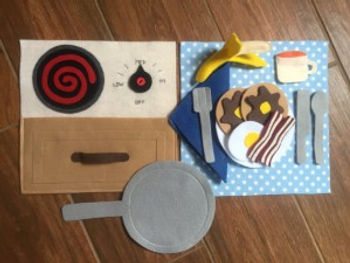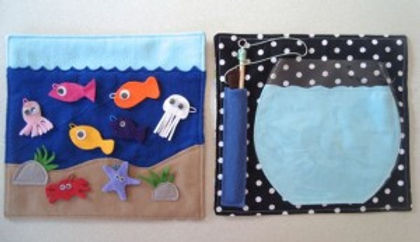Learning To Talk With Sensory Books
- sharad367
- Feb 15, 2018
- 3 min read
Learning To Talk With Sensory Books
When it comes to promoting speech development in children, multisensory stimulation works wonderfully. These days multi-sensory books are very popular among parents and Speech Therapists alike. Be it pop up books, sliding books, touch and feel books, sound books, game books or digital books, all serve as fantastic tools to work on a child’s language and listening skills.
A relatively new and exciting series of books called Sensory Books or Quiet books which are made out of cloth (and felt, buttons, strings, yarn etc.) grabbed my attention.




While learning to talk, a child uses various pre-linguistic skills( attention span/joint attention) and a set of listening and receptive language skills. Sensory Books can be great tools to help children with all these skills. Using these books, a parent or therapist can work on most of these target areas.
Here are some benefits of Sensory Books.
Engaging: These books are engaging and entice the child to participate. They are like interactive stories which have to be completed.
Attention Building: Sensory books can captivate a child’s attention.
Multi-Sense Stimulation: With the visual, tactile, auditory and kinesthetic inputs, a child gets to work various skills at a time.
Sitting Tolerance: With enhanced attention, a child using a sensory book is more liable to sit for longer durations.
Vocabulary Building: Using sensory books, you can build your child’s verbal vocabulary.
Enrich Language: With these books, one can introduce or revise various language concepts like colours, numbers, shapes, prepositions, pronouns, categories, adjectives, inferencing etc.
Fine Motor Work: These books provide opportunities to enhance fine motor skills in children. The intricate tasks of undoing a velcro piece or braiding a doll’s hair, or buttoning a shirt, are all great for fine motor skill development.
Problem Solving tools: Activities in these books can sharpen your child’s cognition and problem-solving skills.
Instil Imagination & Creativity: Sensory books can tune up a child’s imagination by presenting beautiful tasks in a challenging way.
Great for toddlers: Most parents like that these books don’t tear easily. Hence they can be perfect tools for toddlers
Travel buddy: These books can keep your child engaged while travelling. They can learn to talk and practice even when on the go.

About Artsy Audiologist
Through this article, I would also like to introduce my colleague Shruti, who calls herself The Artsy Audiologist. She hand creates some amazing Sensory/ Quiet Books for children. She even uses these books with children having speech & language delays in her therapy interactions.

Shruti has crafted captivating and unique sensory books which were appreciated by everyone in her circle. She has tried using these sensory books in her pediatric therapy programs and the kids loved them. She now aims to make more of such Sensory books which can target various goals in therapy.

“I decided to do a trial run with some patients. I carefully took the components I have made so far to my sessions and started using them. They became an instant hit with the kids. It is then I fully realized how children enjoy these kinds of sensory activities, which involve actual touching, feeling, seeing, moving etc.” Shruti says. Here is a peep into one of the popular Sensory Books that she crafted for Speech-Language Therapy.
You can see video on Artsy Audiologist
These books are a hit with all children. They can especially be helpful for children who have attention difficulties, like ASD and ADHD/ADD. They can also serve as great learning tools for children with language delays.
Please leave a reply if you like this post! Subscribe HERE to get more such awesome ideas straight into your mailbox.

Kommentare